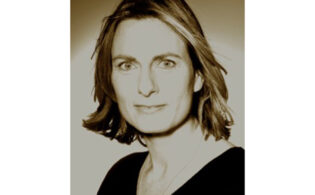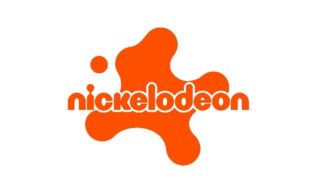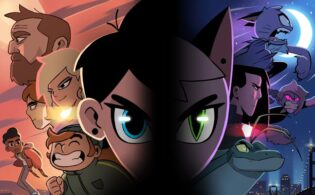Competition in the German kids’ TV landscape has heated up, and Super RTL, which has long been the country’s dominant commercial children’s channel, is rising to the challenges of new entrants in the market and changing viewing habits. The broadcaster is investing heavily in original productions, aligning itself with top-tier programming partners and exploring new opportunities in the SVOD space. CEO Claude Schmit talks to TV Kids about how Super RTL is staying competitive and positioning itself to reclaim its market-leading position in 2016.
TV KIDS: How is Super RTL currently positioned in the German kids’ TV landscape?
SCHMIT: We closed 2015 with a 19.3-percent market share among kids 3 to 13 during daytime. In 2014 we closed at 19.7 percent, so there was not a big drop. Unfortunately, KiKA has overtaken us. KiKA closed 2015 with a 20.1-percent market share. It had finished 2014 like we did, with 19.7 percent. In 2015 they were the market leader, [for] the first time in German history. For the past 15 years it had been us. However, we successfully turned the wheel again in the last six months. So far in 2016 we are number one again.
In regard to Disney Channel and Nickelodeon, as far as we are concerned, they are way behind. They are below 10-percent market share—Disney Channel closed 2015 with 9.5 percent and Nickelodeon with 9.2 percent. Disney has surpassed Nickelodeon for the first time. However, we have more reach than those two channels combined. That is unique. Will this situation remain the same for the next 200 years? I don’t know! We do see a small performance increase at Disney Channel, so I’m sure they are going to reach 10-percent market share and perhaps even a little bit more. I don’t think that Nickelodeon will be able to hit 10 percent again.
We are very ambitious; we want to grow again. So 20-percent market share is this year’s target. I am very optimistic that we are going to reach it, because in the first months of 2016, and looking back to the second half of 2015, we were above 20-percent market share and again market leader.
TV KIDS: How have advertising revenues held up?
SCHMIT: Last year our prime time increased by about 20 percent in reach. Super RTL is the channel with the largest prime-time adult-reach increase ever. That’s huge. It’s not our main strategic focus, but it is working nicely. The advertising revenues follow, so we have no objections. In daytime we have seen an interesting evolution. In 2015 our market share fell to about 19.3 percent and yet we succeeded in maintaining our advertising revenues at the same level. We are doing fine as far as advertising revenues are concerned. Costs are under control, so our net profits are healthy.
TV KIDS: Has the increased competition led you to re-evaluate Super RTL’s original-programming strategy?
SCHMIT: When Disney left as a program supplier we lost about 30 percent of our daytime programming, which is quite a lot. We had to compensate for the loss, and one of the pillars is in-house production. It’s not that we had never done in-house production before, but we had only one slot for it on the weekend and not even in access prime time; it was in the mornings.
The strategy now is to have at least two slots for in-house production per day in access prime time. So, we need a lot of shows to compete in that very competitive environment. We have been developing quite a lot of shows over the last year. We do pilots now, which we never did in the past, and we test them. Obviously the production of pilots is expensive.
Currently we have two original, extremely successful shows in the genre of educational entertainment. One is Woozle Goozle, which features a puppet and a live host. The other is a magazine show called WOW: Die Entdeckerzone, which is more about discovering the world. We are very satisfied with the results. Furthermore, we are thinking about a pet-based magazine show, because animals always work in the kids’ space, and we are thinking about a [countdown] show for kids, which is in preproduction. We are also thinking about a brand extension on Woozle Goozle.
TV KIDS: Are you also exploring new partnerships for third-party content?
SCHMIT: DreamWorks Animation was one of the main answers to our programming issues caused by the loss of the Disney content. That partnership has turned out very well. The ratings are fantastic. Furthermore, we were really pleased to have new shows coming on air last fall. We started with new episodes of DreamWorks Dragons, King Julien and Puss in Boots. We have new seasons coming up and more programs from DreamWorks, so that pipeline is filled.
We also looked into more nostalgic programming. Parents may not necessarily know DreamWorks, but they are familiar with Warner Bros. series like Tom and Jerry. These are also very successful.
One of our further strengths is preschool, which is our morning time slot. It was a great pleasure to relaunch our biggest-ever preschool property, Bob the Builder. It is now 3D animated and more contemporary. The ratings are terrific.
TV KIDS: What led to the launch of the children’s SVOD service kividoo?
SCHMIT: We started analyzing the SVOD market about five or six years ago. There was maxdome in the German market, which belongs to the ProSiebenSat.1 Group. That SVOD service launched ten years ago. Very quickly we realized it had a strange business model: they did not earn any money. As far as I’m concerned, that’s not a good business model. So we considered the idea of SVOD as interesting, but losing money is not an option for us. Business plans were ready, but we decided it was simply too early to move.
Then, Netflix entered the market and vitalized SVOD. Everybody now knows what SVOD stands for and they know Netflix. We thought it seemed to be the time to surf on the Netflix wave, so to speak, and that’s what we did.
We launched kividoo, an SVOD service just for kids. It’s working nicely. Obviously we are not making billions because we don’t have millions of subscribers, but I’m very positive about the outlook. We have been in the subscription business for quite some time, with Toggolino-Club and Toggo-CleverClub, so we know the numbers. Our business plan was not based on getting millions of subscribers. We are on target as far as our numbers are concerned, subscription-wise and money-wise. Do I expect kividoo to replace our linear advertising revenues in the near future? No. So for us it is a test to find out what kids are appreciating and what their parents are spending money on. It’s a learning curve.
TV KIDS: What’s the content pipeline for kividoo?
SCHMIT: We are not just including our own properties. We wanted to act more openly. Of course there are other players in the market with very interesting programs that fit a portfolio like this. I’m talking about our colleagues from KiKA. We got in touch with them and had some discussions. In the end they were a bit reluctant because they don’t want their properties to be shown on a competing commercial platform.
In the year since the launch of kividoo, we have seen what’s really working in Germany and what’s not. From the very large offer we made, we know that it is not worth extending the license for some things. There was scarcity in the market before, but that’s over now. The market is filled again with properties—unfortunately with many properties that don’t have a good track record. We are trying to fill the pipeline. It’s never an issue of content availability; it’s mostly always about money. Sometimes the expectations of the suppliers are simply not acceptable for us.
TV KIDS: What are your priorities for Super RTL in the year ahead?
SCHMIT: We want to grow again. We want to achieve 20-percent market share, but that’s not where we stop. It’s not [impossible] that in the next couple of years we could reach the same numbers we had prior to Disney entering the market. What we have to do is find the right programming and the right partners. DreamWorks is going to be a good part of the pipeline, and our partnership with Warner Bros. is going to be [strengthened] as well. We are also going to increase our in-house productions, and maybe there are other suppliers around the world, especially if the other Hollywood studios re-enter the kids’ business with shows that fit our programming needs. If they want to have a good partner to play with in Germany, that would be us!
Also, in 2016 we will launch a new free-TV channel and it will be the first time-shifted channel in German free TV. It’s called TOGGO plus and will start in early June. We will broadcast our entire daily program, one hour later. That is unique for Germany. No one has ever done that before.
 TVKIDS
TVKIDS






